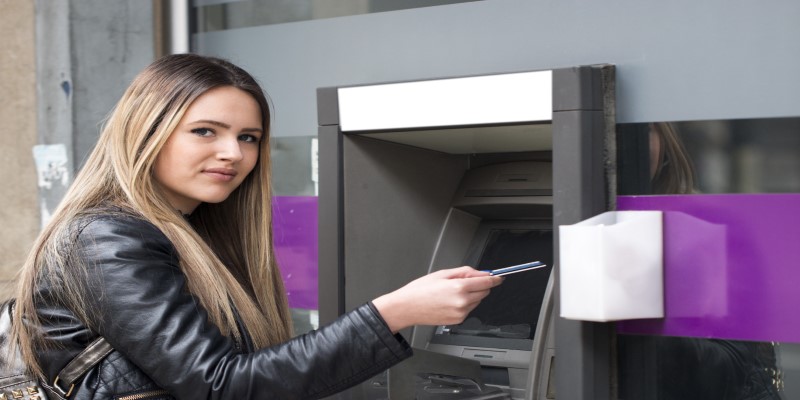As much as we rely on cashless transactions, having cold, hard cash in our wallets is still essential for our daily needs. Withdrawing money from an ATM is one of the most convenient ways to access cash whenever needed. However, it's important to remember that ATMs have daily withdrawal limits that can affect our access to money. Understanding these limits can help us maximize our daily cash withdrawals and avoid unnecessary fees.
In this article, we will explore the concept of daily ATM withdrawal limits, how they work, and ways to work around them. By the end, you'll better understand how to get the most out of your daily ATM withdrawals and keep your cash flow intact.
ATM withdrawal limits
ATM withdrawal limits are essential to banking policies and individual financial security. These limits ensure that customers do not withdraw more cash than they can safely carry or afford to lose. Additionally, withdrawal limits protect financial institutions from potential theft or fraud by limiting the amount of money that can be withdrawn at any given time.
Withdrawal limits can vary based on factors such as the customer's account type, the ATM location, and the bank's policies. It's important to note that exceeding the withdrawal limit can result in fees or penalties, so it's always wise to be aware of these limits and plan accordingly.
The Basics
ATM withdrawal limits refer to the maximum amount of cash a bank or credit union allows customers to withdraw from an ATM. These limits are typically set daily or monthly and can change according to the financial institution. ATM withdrawal limits are put in place to protect customers against fraudulent activities and ensure enough cash is available to meet all customers' demands. It's important to note that customers may also have their daily withdrawal limits set by their bank or credit union.
Practical and Security Reasons: The limits imposed on daily cash withdrawals by banks are not arbitrary but instead serve practical and security purposes. These limits are put in place to manage the availability and flow of cash, which helps safeguard the bank's and its customers' resources against theft or fraudulent activities. Therefore, it is essential to adhere to these limits to ensure the bank's and its customers' safety and security.
Example: In the event of a stolen debit card or PIN, withdrawal limits play a critical role in safeguarding the account from being completely drained by malicious actors. By acting as a barrier, withdrawal limits significantly reduce the amount of money that can be withdrawn from the report, providing an added layer of security for the account holder.

Factors and Scenarios Affecting ATM Withdrawal Limits
ATM withdrawal limits are an essential aspect of modern banking that directly impacts our daily access to cash. These limits are determined by various factors and scenarios, including the location of the ATM, the customer's account type, and the bank's policies. Understanding these dimensions is essential to manage your finances better and avoid any inconvenience when withdrawing cash.
Bank Policies
Banks establish ATM withdrawal limits based on factors inherent to their policies. These include:
- ATM withdrawal limits are influenced by the amount of physical cash stocked in them.
- Banks balance accessibility with available funds while setting withdrawal limits.
- Security measures against theft and fraud result in lower withdrawal limits.
- Banks may lower withdrawal limits in areas with a higher incidence of fraudulent activities.
- Withdrawal limits are tailored to customer expectations and usage patterns.
- Tech-savvy clientele may enjoy higher withdrawal limits to accommodate frequent digital transactions.
- Withdrawal limits act as a safeguard against potential financial losses.

Account Types
The type of account you hold significantly influences ATM withdrawal limits. Distinctions between account types include:
- Your account type affects your ATM withdrawal limit.
- Checking accounts typically have higher withdrawal limits than savings accounts.
- Bank X allows up to $1,000 daily check withdrawals and $500 for savings accounts.
Customer History
Individual banking histories contribute to the determination of ATM withdrawal limits. Factors considered include:
- A higher current account balance leads to increased withdrawal limits.
- A substantial proportion may increase the daily withdrawal limit to $1,500 compared to $500 for lower balance accounts.
- Frequent transactions, especially within the bank's ecosystem, can positively influence withdrawal limits.
- Regular transactions may make a customer eligible for a higher daily withdrawal limit than an infrequent user.
- Long-term customers with established relationships may enjoy increased withdrawal limits as a gesture of loyalty.
- A multi-year relationship with a bank may increase the daily withdrawal limit to $2,000 compared to $1,000 for a newer customer.
Special Situations
ATM withdrawal limits can be influenced by specific situations, requiring tailored considerations:
- Banks offer temporary increases in withdrawal limits during emergencies.
- Withdrawal limits may be raised after a natural disaster to facilitate urgent financial needs.
- Banks adjust withdrawal limits for customers who travel to different regions or countries.
- Customers may request a temporary increase in the withdrawal limit for international travel.
- Withdrawal limits might be adjusted during holidays to accommodate increased spending patterns.
- Banks may raise withdrawal limits ahead of major holidays to accommodate higher transaction volumes.
Wrap-Up!
Managing your finances can be daunting, but it doesn't have to be. Knowing your daily ATM withdrawal limit is one of the easiest ways to keep your spending on track. This simple information can help you plan your cash usage, avoid unnecessary fees, and keep your finances in check.
But how do you determine your daily limit? Just check with your bank or credit union, and be sure to ask about any associated fees. Once you know your limit, keep your ATM receipts and review your account regularly to track your spending and stay within your budget. With this knowledge, you can make informed decisions, take control of your financial future, and avoid overspending. Remember, a little planning goes a long way when managing your finances.




